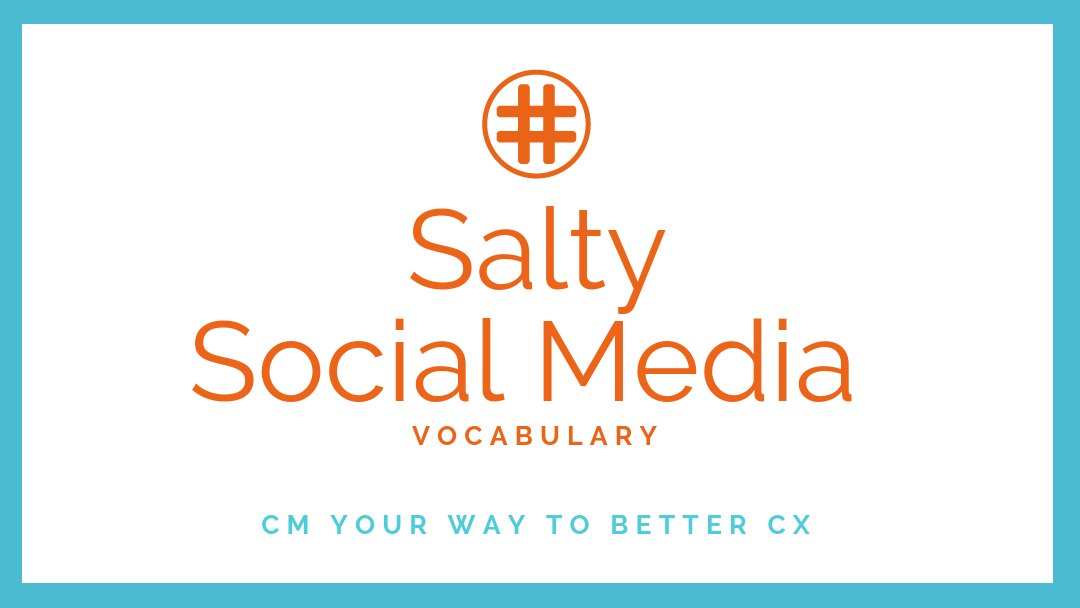Welcome back to Salty Social Media Vocabulary, where we chat all things social media, CX best practices, and more. Perhaps you’re new to community management. Other than the guidelines set by your brand voice, there are no real hard or fast rules—in fact your CX process should always leave room for contingency, surprise and delight. That being said, we would like to suggest a few best CM practices that should be an integral part of your broader CX process. If done correctly, your process should improve your CM efficiency, and ultimately make your customers love you.
Product or Service Complaint
Once brands took to social, customers almost immediately began using social to reach brands for troubleshooting. If your brand has any social presence, you should have an action plan implemented for dealing with product/service complaints online—something we call part of the customer journey.
Examples:
“I can’t connect to my Atari: your Superscreen 6K TV is a piece of shit*.”
“My computer can’t find my KaBoom Speaker via bluetooth.”
Action:
Engage. Send customer through guided CS/troubleshooting routine
Why?
One of the easiest ways to improve your CX is to be accessible. You will automatically win points on social when users see that you are responsive to customers on social, and this is especially true if you solve any of their problems.
Uninspired Critique of Your Product or Service
Bad reviews by reputable outlets are one thing, and when a nonprofessional reviewer insults your product, well, that’s a whole other thing. However always consider the possibility that a customer who launches a nonspecific complaint at you may have a specific and reparable complaint about your product of service.
Examples:
“Your products fucking suck.” no swearing lololol
“FasTech is garbage.”
Action:
Engage. Considering blocking if they are a repeat offender.
Why?
This could present an opportunity to change a mind by engaging with a user who has a legitimate complaint. It’s not uncommon for a customer to go to the internet to vent, which creates an opportunity for your brand to wow a customer.
Overt General Nastiness
Ah yes, the internet, home to the free exchange of information and ideas, as well as home to pure unadulterated vitriol. Anyone who has ever been a CM or even just read the comments section knows that whether trolling or not, there exists a horrible presence on social that occasionally rears its ugly head.
Examples:
Any number of racist, sexist, xenophobic, homophobic, transphobic, or misogynistic comments directing at your brand, other users, or anyone in general.
Action:
Hide or delete.
Why?
Free speech or not, any respectable brand should have a zero tolerance policy for such language.
Demonstrating a Defective Product or Service
Somewhere between the world of reviews and teardown exists a particular kind of customer complaint, wherein a user opts to demonstrate a defective product or problematic service. These are not necessarily a type of trolling, but instead can directly deter potential future customers, and they can also provide an opportunity for other brands to succeed over you*.
Example:
A, uh, user posts a video or photo of your defective product or a problem with a service you offer.
Action:
Engage.
Why?
While the video of photo itself may reach a large audience, your direct engagement will keep your product failure from going viral. If you fix the problem, your response to the user may itself become the story.
Trolls
The anonymous nature of the internet has made it a haven for trolls, especially on social media. While many social media platforms have created automatic filters to detect and block spam and spammy behavior, trolling seems to be more difficult to eradicate automatically. For the average CM, this means that greater engagement will innately bring more trolls, especially for higher profile brands.
Example:
“Everything you’ve ever done is trash.”
“All of you fanboys are obviously morons.”
Action:
Delete and issue warning. Block user and forget ‘em if problem persists
Why?
Unless your brand voice thrives on conflict or you have some 🔥 responses, just don’t feed the trolls.
As noted earlier this week, having good protocols in place can help streamline your CM engagement process, especially as your team grows. Remember that while protocol is important, it’s likely that you’ll be unable to foresee any and all social media contingencies. Accordingly be prepared to pivot or make exceptions. Community management falls under the rubric of CX; we’re prepared to help your team establish best social media practices to improve your CX and increase customer engagement. We’d love to hear from you directly and feel free to share some of your CM stories in the comments below.

Blog
CM Your Way to Better CX: Community Management Best Practices
Your CX process should always leave room for contingency, surprise and delight. We would like to suggest a few best CM practices that should be an integral part of your broader CX process. If done
